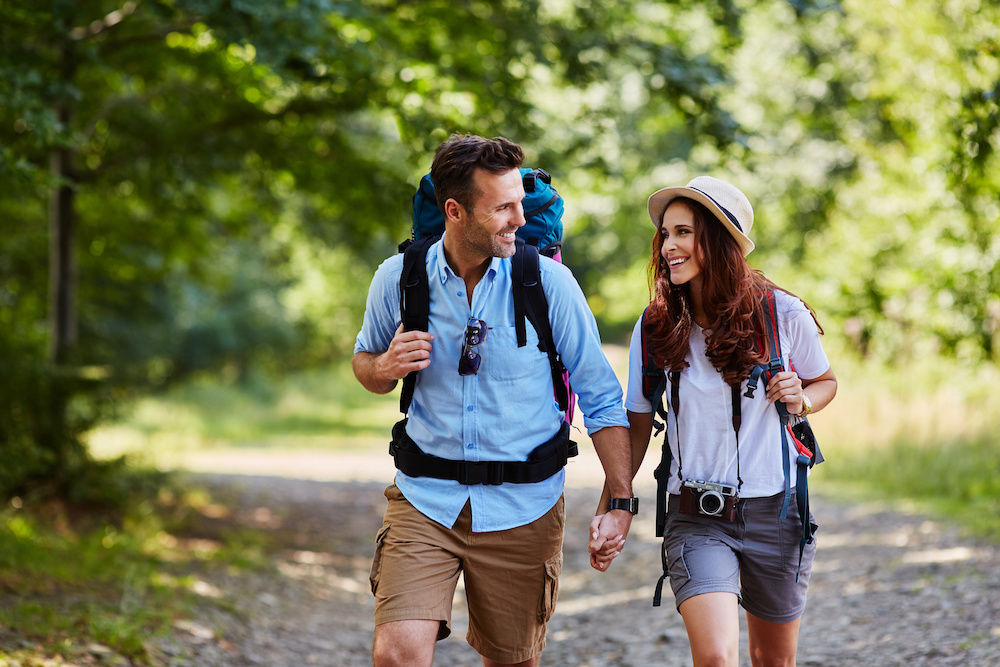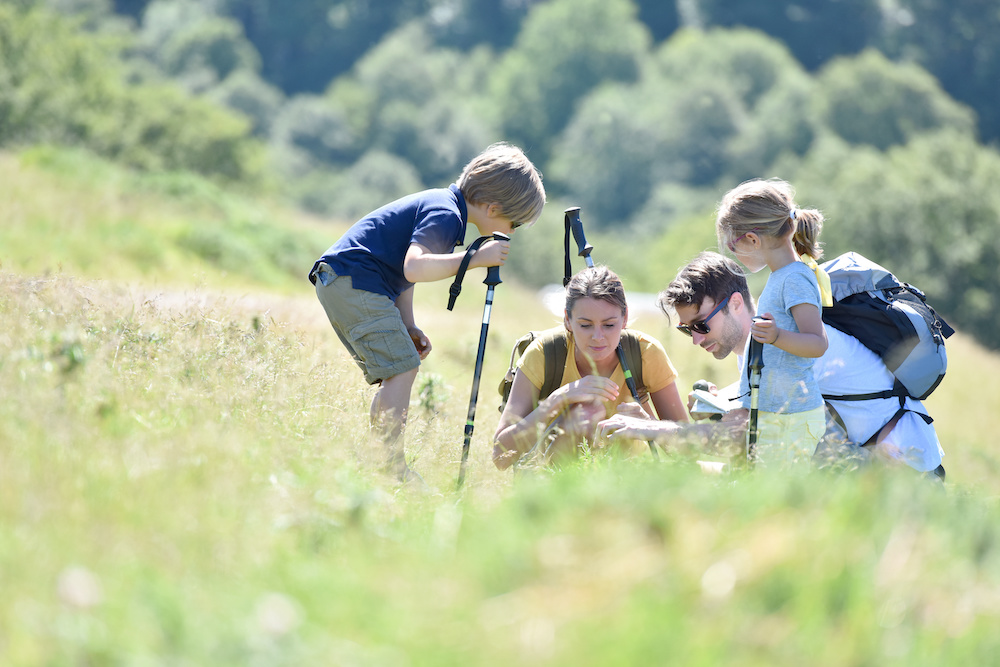
There’s nothing more satisfying than spending time with your friends and exploring new things together.
Hiking is an activity worth enjoying on sunny days. However, you may also experience intense heat that might ruin your adventure.
During this time, you must know what to wear hiking in summer so you can make preparations before heading out.
You may not realize it but choosing the proper attire when hiking in hot weather is not a simple matter.
You must stay refreshed throughout the activity while managing your sweat because you will produce a lot of it with every step.
What To Wear Hiking in the Summer
When choosing what to wear hiking in hot weather, look for garments with moisture-wicking ability made from quick-drying materials.
Undergarments
Look for undergarments made of merino or synthetic materials.
These fabrics have moisture-wicking and quick-drying properties, moving the moisture away from your body.
They help keep you dry even as you sweat. At the same time, they cool you down because of their excellent breathability.
You must also ensure that the undergarments have anti-microbial properties, making the fabric odor-resistant and preventing skin irritations.
Hiking Shoes
Choose lightweight but durable hiking shoes made from leather or synthetics or a combination of both.
These shoes are usually waterproof with superior breathability, like the Merrell Moab 2 Hiking Shoes.
Shorts
Synthetic-made shorts possess both moisture-wicking and quick-drying properties that are essential to hiking garments.
T-Shirt or Vest
Merino and synthetic fabrics are the perfect material choices for either t-shirt or vest.
These materials offer the necessary properties for the best hiking tops.
Cap or Hat
Besides the main criteria of the right hiking gear, remember to look for a hiking cap or hat with UV protection.
Jacket
Your hiking jacket must be breathable, waterproof, and windproof.
It should also be easy to pack and not as bulky since you may not use it throughout the hike.
What Should You Not Wear While Hiking
Knowing what to wear hiking in hot weather is not enough. You should also learn what not to wear.
If you are new to hiking, you probably don’t have a clear idea of what you should and should not wear to your adventure.
You may not be aware, but some clothing items are not suitable for hiking as they may only bring discomfort instead.
Here are some clothing choices you need to avoid when on a hiking trip:
1. Denim
We are not just talking about jeans, but all kinds of clothing made from denim material, like jackets and overalls.
Denim absorbs moisture quickly, which includes sweat and rain.
This material does not have moisture-wicking and quick-drying properties, which will leave you wearing wet clothing.
Whatever type of weather condition you have in your hiking location, wearing wet or damp clothes is dangerous to your overall well-being.
Denim may also cause chafing, especially in the inner thighs and the armpits, making it uncomfortable to move.
2. Cotton
Cotton is also an absorbent material similar to denim.
It will make you feel hot and sweaty during hot weather and chilly in a cold environment.
That said, make sure to avoid wearing cotton clothing, including underpants, bras, and socks.
3. Silk
Silk is not as bad as the other previous fabrics, but it’s also not suitable for hiking.
It has a limited amount of moisture-wicking properties, holding on to sweat and causing the garment to cling to your body.
It can also hold on to unpleasant odors emitted from your body.
Lastly, silk is a thin material that can easily tear when snagged on rocks and branches.
4. Ankle or Foot Socks
Wearing the appropriate type of socks when hiking is crucial to your experience.
Ankle or no-show socks are not suitable for this kind of adventure.
Do not wear socks that tend to go down, exposing the back of your foot and rubbing against the shoe’s inner side.
This is not just uncomfortable but will eventually lead to getting blisters, making it hard to walk comfortably and hindering your progress.

5. Flimsy Shoes
Hiking means you will be walking on an uneven path, which may include plenty of natural hazards, thus the need to wear protective shoes.
You may have to walk over rocks, cross rivers, or stumble upon sharp plants, including cacti.
Hence, your footwear must be durable enough to protect your feet throughout the journey.
Do not wear shoes that lack traction, so you have a way of gripping the ground underneath and prevent sliding and accidents.
Most hikers opt to wear hiking boots, which also provide sufficient ankle support.
6. Bras With Clasps
For women hikers, wearing a bra is also part of their hiking gear.
Aside from avoiding cotton bras, do not wear bras with clasps on hiking trips.
As hikers, you would typically have a backpack strapped on your back.
Each time you move, the backpack shifts. Each movement, combined with uncontrolled sweating, may irritate your skin.
Wearing bras with clasps add more discomfort when skin irritation starts.
7. Bulky Clothes
Heavy or loose clothes while hiking can be an issue. Loose shirts are acceptable, especially in hot weather.
You would want to avoid wearing bulky jackets and loose pants at all costs.
Nevertheless, packing a jacket is a must when hiking.
Loose-fitting jackets and pants can produce awkward movements as you may need constant adjustments to your clothing.
As a rule of thumb, avoid loose and bulky clothes to prevent discomfort and irritations during your hike.
8. Stiff and Thin Fabric
Your hiking clothes need to be functional and comfortable at the same time.
During these adventures, you will encounter all kinds of risks that require plenty of movement.
Thus, the need to wear clothes that can maneuver through all these hazards.
Avoid wearing thin fabric during a hike, as it can snag and rip from plants and rocks along the way.
Hiking pants must have the sturdiness and flexibility that can withstand all the challenges you will encounter outdoors.
9. Body Sprays
If you are used to wearing scents, you must be cautious of putting on one while outdoors.
Sweet and floral sprays attract different types of bugs and insects easily.
Also, some scents do not go well with sweat during hot weather and may produce an unpleasant smell.
10. Single Layer of Clothes
Do not go out in the wild with just a single layer of clothing.
Following the garment layering system, it is always best to observe this method to be safe.
The weather outdoors is unpredictable, which is why it is ideal to layer your clothes.
In this way, you can add or remove a garment as necessary.
FAQs
1. What to wear hiking in the summer?
Wear light-colored clothing as it reflects the sun’s rays, helping you to stay cooler in hot weather.
Also, choose lightweight and breathable hiking clothes to regulate your body temperature.
Look for clothes with a UPF rating to ensure protection against UV rays.
Lastly, try to cover up your exposed skin, like your arms, by wearing long sleeve shirts.
2. What extra things do you need to pack when hiking?
Besides the appropriate hot weather hiking clothes, don’t forget to pack extra water and electrolytes to prevent dehydration.
Bring along sun protection, whether it’s a sunscreen lotion or shirts and hats with UV protection.
Bug and insect repellant are also essential items you need to include in your pack.
Don’t forget your rain gear, too, as it’s typical to experience rain showers even during summer.
3. What shoes to wear for hiking in summer?
You should not wear sow and winter hiking shoes during the summer months.
You have to look for the right footwear for your summer runs, hikes, and other hot-weather activities.
Hiking Boots
Those who don’t value the importance of hiking boots find out too late and experience discomfort due to blisters and profuse sweating.
Hiking Sandals
If you’re just trekking mild terrains, you can make-do with hiking sandals.
Make sure you’re not carrying too much weight on your pack, though.
Sandals are only suitable for day hikes on packed dirt or rocks, river crossings, and stream-formed trails.
It has a curved footbed and enough arch support, preventing the toes from sliding to the footwear’s edge.
Hybrid Shoe
If you know that you will cross over both land and water, you can opt for a hybrid shoe that’s suitable for both.
Typically, it has a solid insole for stability when hiking on land.
At the same time, it provides the needed traction when on the water.
4. Can you wear hiking boots in summer?
Hiking boots are timeless pieces of footwear that you can wear in whatever season.
They are comfortable, durable, practical, and weatherproof.
When choosing a hiking boot to wear in hot weather, remember to look for one that offers warmth, traction, and waterproofing properties.
Thankfully, the market abounds with plenty of footwear choices.
Determine where and when you plan to hike to make it easier to choose the appropriate footgear.
There are day hiking boots in either mid- or hi-cut versions created for day hike adventures and for carrying a light load.
These are flexible hiking boots that need little break-in time or none at all.
Hiking boots offer the right protection for your feet while still providing comfort.
What To Wear Hiking in Summer
You don’t know need to ask an expert what to wear hiking in summer. Just remember always to layer your clothes when going out.
Observe temperature changes and decide whether to add or remove some of your clothes accordingly.
Follow our tips on choosing the right hot weather hiking clothes to ensure that you will enjoy your time outdoors.
